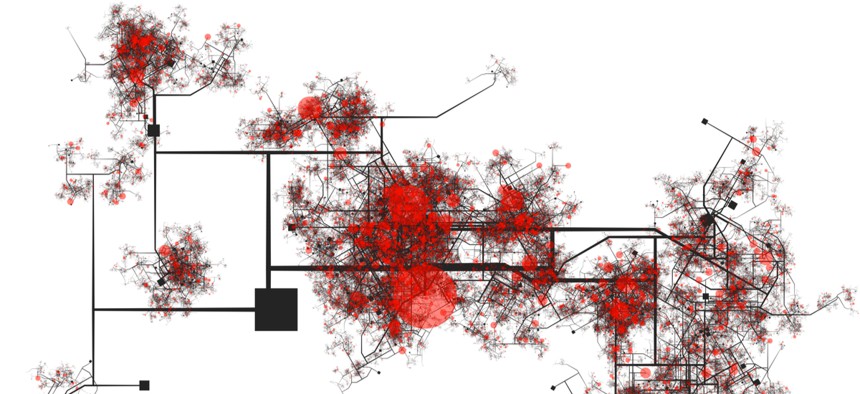Is Social Distancing Effective? Navy Considers Employee-Tracking Wearables to Find Out.

kentoh/Shutterstock.com
Officials are looking to launch a proximity tracking program.
Equipping personnel with wearable devices that track their movements and proximity to others is among near-future actions the Navy is considering to ensure employees keep appropriate space amid the pandemic—and to determine the efficacy of the government’s social distancing policies.
The Naval COVID Rapid Response Team is exploring the potential of existing commercial or advanced prototype technologies that can be used to underpin a “proximity tracking program” as the pandemic presses on, according to a recently released request for information. Records produced by wearables through the effort would track any time those wearing them interacted within 10 feet of one another.
The market research request comes as the Navy—and military at-large—severely scrambled to contain infection and spread of the novel coronavirus on its fleets and bases. In April, for instance, officials confirmed more than 10% of a 4,865-person crew on a Navy aircraft carrier tested positive for COVID-19. Other ships have since broken records for their time spent at sea, after their returns to shore were postponed to help slow and stop the virus.
The proximity tracking program the Navy’s exploring would incorporate storage and processing device stations and wearable devices that capture data points that can be used to “calculate the total time and at what distance” individuals wearing them operate in close contact, according to the RFI. On top of issuing and configuring the wearables and analyzing the collected data, the program’s administrator would also facilitate connections to other databases, including with digital medical records.
“The proximity records will primarily be used to identify those individuals that were too close for too long to a person that has tested positive for COVID-19,” officials wrote in the request. “Secondarily, this data will be used to determine if social distancing policies put in place by the government employers are effective.”
Though the RFI notes the wearable tracking devices “are only intended to be worn while at work,” officials do not clarify which employees would be outfitted with them. Nevertheless, the draft requirements attached to the request offer details into what the to-be-deployed wearables and program would look like on the ground.
Specifically, the team is interested in devices that are no larger than 3 square inches, or the “typical size of a large men’s watch.” The wearables would need to be versatile and clip onto users’ collars, lanyards or bracelets, and have the capability to identify and store proximity records and information from up to 100 other devices in one minute. The Navy is also interested in additional features, including the ability to provide audio or haptic feedback to wearers when they are within 6 feet of other personnel.
Since COVID-19 evolved from outbreak to pandemic over the last half-year, a range of companies have produced and sold technological products that use Bluetooth and other means for contact tracing and to monitor employees’ movements and distances within workplaces in real time in an effort to enhance safety. Though the nascent movement-collecting technology holds promise, it’s also introduced concerns around privacy and security—as data on every interaction and motion in the workplace can be stored by such wearables. It’s a risky issue that isn’t new to the military. In 2018, the Pentagon banned personal, internet-connected devices from secure and classified facilities, after the locations of multiple overseas military bases were unintentionally exposed by the fitness-tracking app, Strava.
To mitigate any potential privacy risks, the Navy wants a device that does not store any personally identifiable or personal health information about the wearers and does not store any location or GPS data.
The Navy’s looking to move fast toward implementation and has given interested vendors who can supply the technology a little over a week to supply information on their capabilities—and the feasibility of launching such a proximity tracking program. The deadline to respond to the RFI is July 16 at 4 p.m. Eastern Standard Time.






